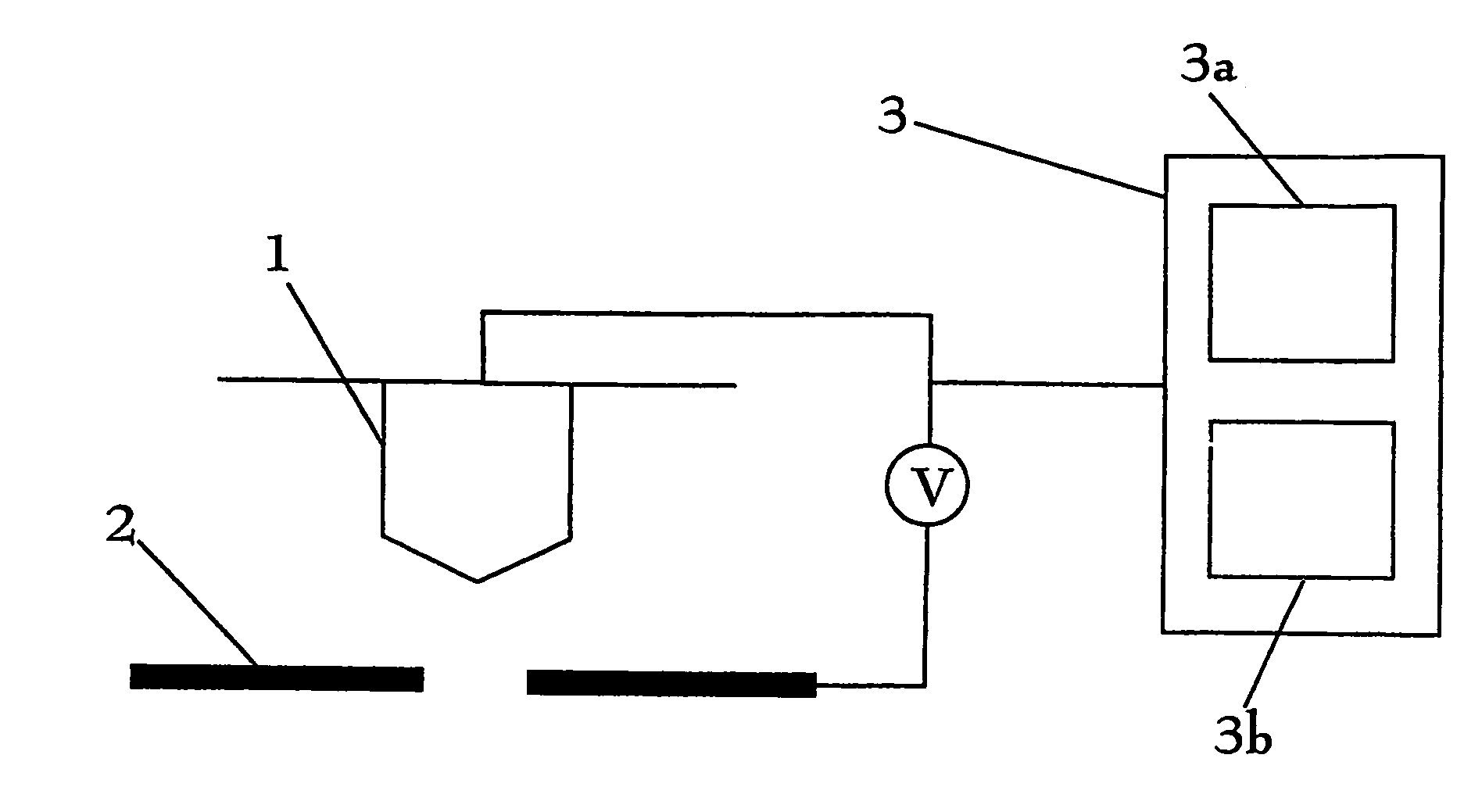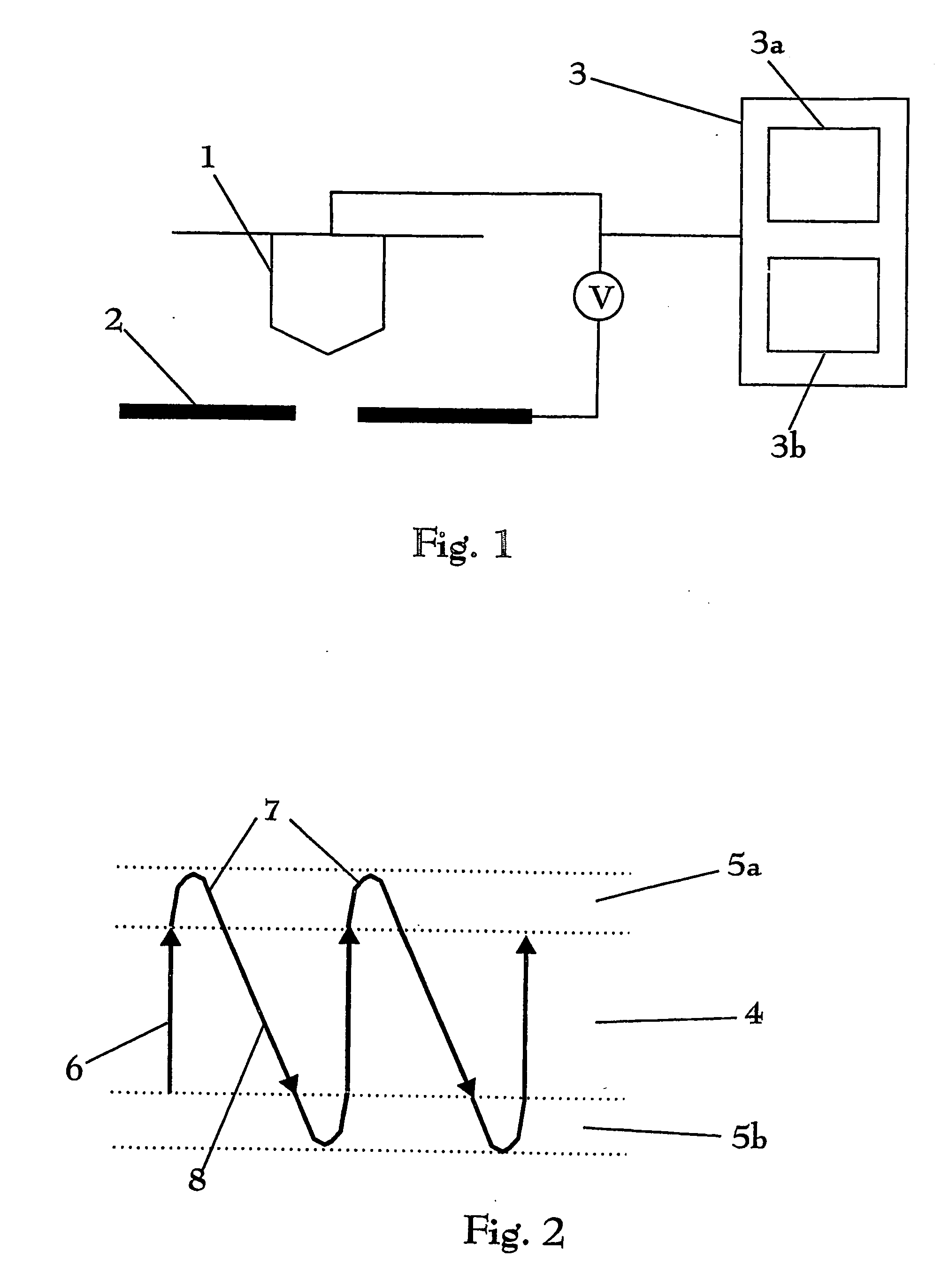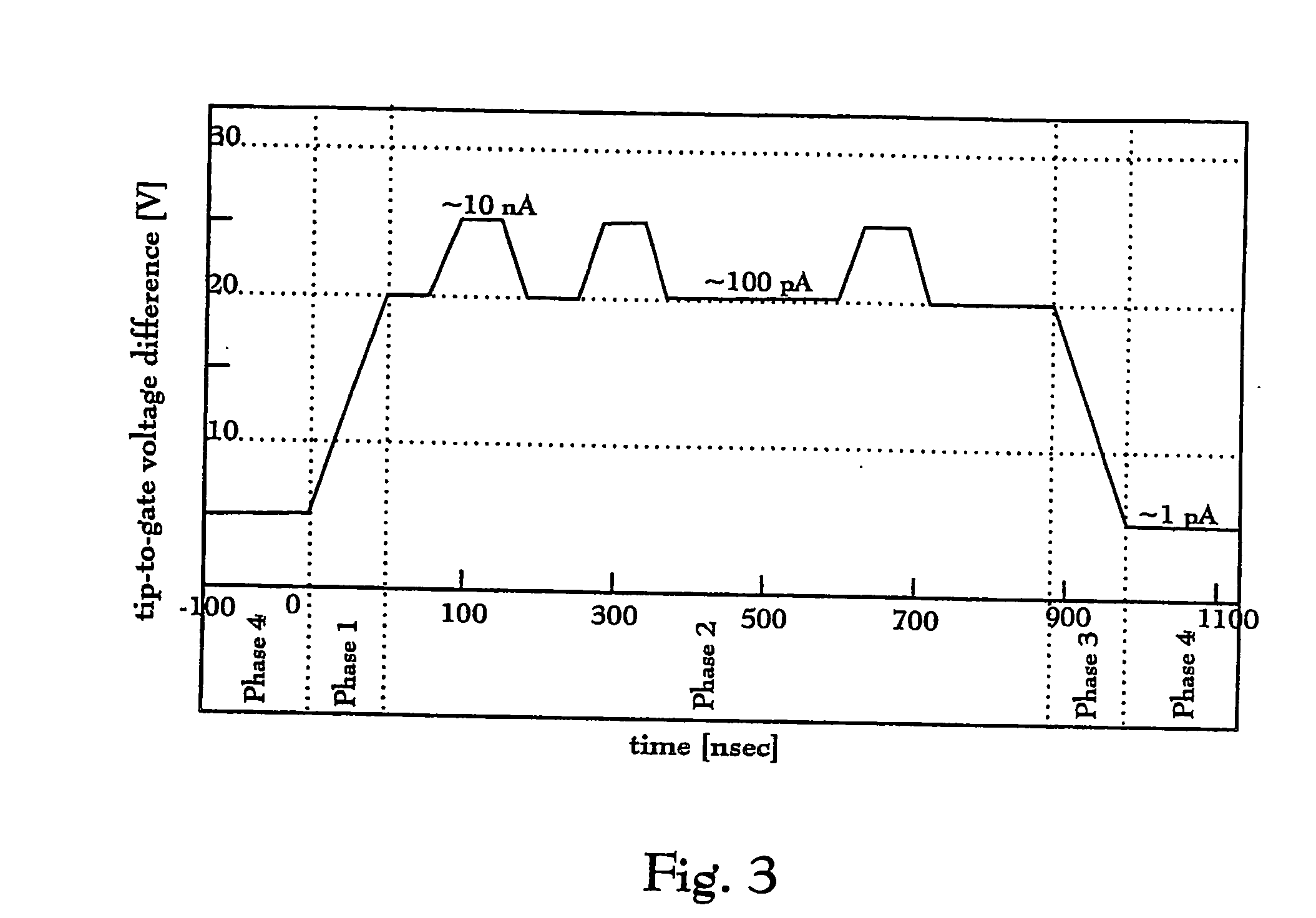Apparatus and method for controlling the beam current of a charged particle beam
a charged particle and apparatus technology, applied in the direction of beam deviation/focusing, instruments, heat measurement, etc., can solve the problems of too slow to deliver the throughput needed in large-scale manufacturing, cd or other undesired variations, and achieve the effect of miniaturization and mass production
- Summary
- Abstract
- Description
- Claims
- Application Information
AI Technical Summary
Benefits of technology
Problems solved by technology
Method used
Image
Examples
Embodiment Construction
[0024]FIG. 1 is a schematic view of a field emission cathode. Field emission cathodes are known electron beam sources for electron beam devices in applications as diverse as e.g. electron microscopy, electron pattern generators or flat panel displays. They were first proposed by C. A. Spindt (Journal of Appl. Physics, Vol 39 (1968) No. 7, p. 3504-3505). The main elements of the cathode are a very tiny emitter tip 1 and a gate 2. The field emission cathode emits electrons into free space by applying a high electric field to the surface of the emitter tip 1. Without electric field there is usually a potential barrier of theoretically infinite thickness at the interface of the emitter tip and free space or vacuum. The height of the potential barrier depends on the surface material of the emitter tip. When an external electric field is applied to the emitter tip that attracts electrons, the potential barrier thickness reduces. When the electric field at the surface of the emitter tip is...
PUM
 Login to View More
Login to View More Abstract
Description
Claims
Application Information
 Login to View More
Login to View More - R&D
- Intellectual Property
- Life Sciences
- Materials
- Tech Scout
- Unparalleled Data Quality
- Higher Quality Content
- 60% Fewer Hallucinations
Browse by: Latest US Patents, China's latest patents, Technical Efficacy Thesaurus, Application Domain, Technology Topic, Popular Technical Reports.
© 2025 PatSnap. All rights reserved.Legal|Privacy policy|Modern Slavery Act Transparency Statement|Sitemap|About US| Contact US: help@patsnap.com



